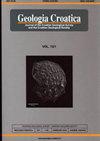Application and improvement of soil spatial distribution mapping using advanced modelling techniques
IF 1.1
4区 地球科学
Q3 GEOLOGY
引用次数: 3
Abstract
The main purpose of this contribution is to develop realistic prediction digital soil maps in order to increase their visuality, and to evaluate and compare the performance of different modeling techniques: a) Kriging, b) Artificial Neural Network – Multilayer Perceptron (ANN-MLP) and c) Multiple Polynomial Regressions (MPR). The following criteria were used to determine selection of the testing site for the modeling: (1) intensive metal ore mining and metallurgical processing; (2) geomorphological natural features; (3) regular geological setting, and (4) the remaining minefields. The success of Digital Soil Mapping and the plausibility of prediction maps increases with the availability of spatial data, the availability of computing power for processing data, the development of data-mining tools, geographical information systems (GIS) and numerous applications beyond geostatistics. Advanced prediction modeling techniques, ANN-MLP and MPR include geospatial parameters sourced from Digital Elevation Models (DEM), land use and remote sensing, applied in combination with costly and time-consuming soil measurements, developed and finally incorporated into the models of spatial distribution in the form of 2D or 3D maps. Innovative approaches to modeling assist us in the reconstruction of different processes that impact the entire study area, simultaneously. This holistic approach represents a novelty in contamination mapping and develops prediction models to help in the reconstruction of main distribution pathways, to assess the real size of the affected area as well as improving the data interpretation.先进建模技术在土壤空间分布制图中的应用与改进
这一贡献的主要目的是开发逼真的预测数字土壤图,以提高其可视化程度,并评估和比较不同建模技术的性能:a)克里格,b)人工神经网络-多层感知器(ANN-MLP)和c)多重多项式回归(MPR)。以下标准用于确定建模试验场地的选择:(1)密集的金属矿开采和冶金加工;(2) 地貌自然特征;(3) 常规地质环境,以及(4)剩余雷区。随着空间数据的可用性、处理数据的计算能力、数据挖掘工具、地理信息系统(GIS)的发展以及地质统计学之外的众多应用,数字土壤测绘的成功和预测图的合理性不断提高。先进的预测建模技术,ANN-MLP和MPR包括来自数字高程模型(DEM)、土地利用和遥感的地理空间参数,结合成本高昂且耗时的土壤测量,开发并最终以2D或3D地图的形式纳入空间分布模型。创新的建模方法有助于我们重建同时影响整个研究领域的不同过程。这种整体方法代表了污染绘图的新颖性,并开发了预测模型,以帮助重建主要分布路径,评估受影响区域的实际规模,并改进数据解释。
本文章由计算机程序翻译,如有差异,请以英文原文为准。
求助全文
约1分钟内获得全文
求助全文
来源期刊

Geologia Croatica
GEOSCIENCES, MULTIDISCIPLINARY-
CiteScore
2.90
自引率
23.10%
发文量
35
审稿时长
>12 weeks
期刊介绍:
Geologia Croatica welcomes original scientific papers dealing with diverse aspects of geology and geological engineering, the history of the Earth, and the physical changes that the Earth has undergone or it is undergoing. The Journal covers a wide spectrum of geology disciplines (palaeontology, stratigraphy, mineralogy, sedimentology, petrology, geochemistry, structural geology, karstology, hydrogeology and engineering geology) including pedogenesis, petroleum geology and environmental geology.
Papers especially concerning the Pannonian Basin, Dinarides, the Adriatic/Mediterranean region, as well as notes and reviews interesting to a wider audience (e.g. review papers, book reviews, and notes) are welcome.
 求助内容:
求助内容: 应助结果提醒方式:
应助结果提醒方式:


